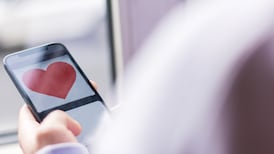A law curtailing the use of Electro-Convulsive Therapy (ECT) on involuntary mental health patients did not result in fewer people receiving the treatment.
A total of 263 people underwent one or more courses of ECT during 2016, a slight increase on the 242 who received it in 2015, according to the figures.
At the start of 2016 legislation was introduced stating ECT treatment can only be administrated to an involuntary patient without consent if the patient is unable to give their consent.
The law essentially narrowed the number of situations in which the treatment could be administered in the absence of consent.
Previously it could be carried out on an involuntary patient if they were merely unwilling to consent. Now it has to be shown they do not have the mental capacity to consent.
The slight rise in treatments suggests few if any patients capable of consenting were refusing treatment before the law change.
The Mental Health Commission (MHC) which monitors ECT usage noted the law change "has not led to any fall in the administration of ECT."
Of those who received ECT in 2016, 79 per cent received one programme (consisting of twelve treatments), 16 per cent received two programmes and five per cent received five or more. A total of 2,558 individual treatments were administered.
Eighty per cent of people who underwent ECT were voluntary in-patients when they started their treatments.
Patients showed improvement in their conditions in 93 per cent of cases. The treatment was mostly used to treat severe depressive disorders which had shown a resistance to medication.
The use of ECT has become rare in recent decades and its administration is highly regulated.
It involves an electric current being passed briefly through the brain via electrodes applied to the scalp to induce generalised seizure activity. The person receiving treatment is placed under general anaesthetic and muscle relaxants are given to prevent body spasms.
Of the in-patient mental health facilities in Ireland, only 23 per cent provide ECT. Another eight per cent refer residents to other centres for the treatment.
Two thirds of ECT patients were female. They had an average age of 59 although patients as young as 18 and as old as 93 received it.
Those with depression made up 74 per cent of patients followed by schizophrenia (12 per cent) and mania (eight per cent).
Other diagnoses included neuroses, personality and behavioural disorders and organic disorders.











